When the winter holiday season arrives, holly branches and berries are a common sight in home décor. However, although they serve that role well, types of holly plants are much more than a source of seasonal decoration. Instead, holly plants have immense value in the landscape as well. Additionally, holly plants come in far more forms than you might expect. Since there are so many valuable holly shrubs and trees that often go overlooked when gardeners select plants for their yards, we decided to create a list of the best holly plants around. After reading, you’ll not only know much more about various holly types, but you’ll also have a good idea of which one is best for you.
As we introduce each of the holly plants that made it onto our list, we will be sure to include a brief description that includes information about what makes that particular plant impressive while also commenting on growth requirements. As you reach each of those descriptions, you may also notice that there are a few common themes that come up again and again. Below is a quick list of those key takeaways.
Key Takeaways
- All holly plant species come from the same genus, Ilex.
- Holly plants typically have fantastic foliage as one of their main ornamental features.
- Many popular holly plants have bright fruits that persist during the colder months of the year.
- Holly plants can grow as trees or as shrubs, depending on the species and how you care for it.
- Certain holly plant species are better suited for specific regions within the United States.
12 Diverse Types of Holly Plants that You Might Not Have Heard of
1. American Holly (Ilex opaca)
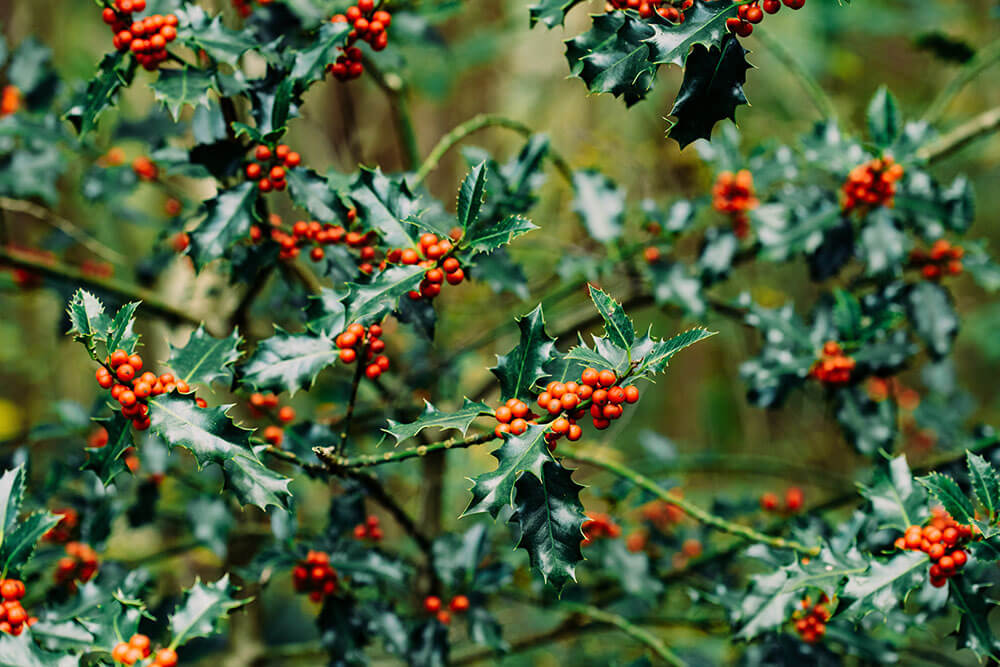
We are kicking off our list with what is likely the most quintessential and classic holly type in the United States. Fittingly, the American holly is the holly that most in the US thinks of when hollies come to mind. As you’ll soon see, there are many hollies that are different in their shape and look from the American holly, but this first entry is not worth overlooking. The American holly has the perfect ratio of spiky and glossy leaves combined with clusters of red berries. That timeless combination makes the American holly a shrub that will not soon go out of style.
2. Blue Holly (Ilex x meserveae)
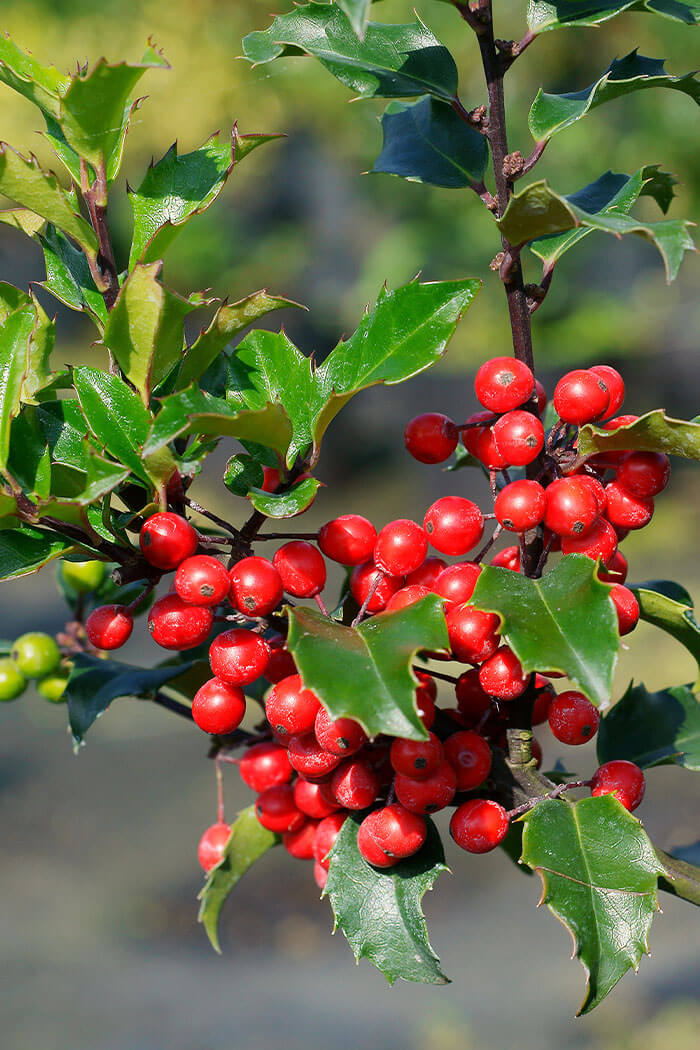
Unlike nearly all the other hollies on our list, this entry on our list is a hybrid species that came about via deliberate cultivation. Known botanically as Ilex x meserveae, the blue holly unsurprisingly offers a different foliage color than most other shrubs. Rather than being pure green, the leaves of a blue holly have a decidedly blue tint. Since this shrub also has vibrant red berries common to a holly plant, it is able to create some fantastic contrast without the support of another plant.
3. Carolina Holly (Ilex ambigua)

The topic of whether a holly plant is a tree or a shrub is a difficult one to resolve. However, the Carolina holly is one of the holly species that is naturally a bit more tree-like in its growth habit. When mature, the Carolina holly takes on a tall pyramidal form, a lot like that of a common Christmas tree. Still, the Carolina holly is different from previously mentioned hollies for other reasons. For instance, while still slightly pointed, the leaves of a Carolina holly are generally more rounded than those of other common holly types.
4. Chinese Holly (Ilex cornuta)
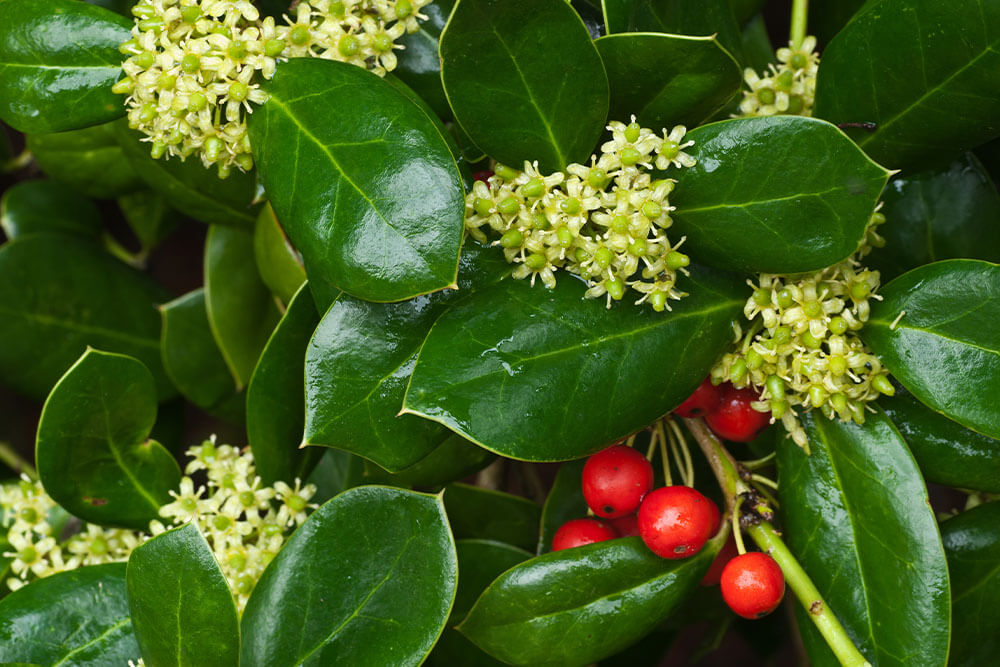
Ornamentally valuable leaves are essentially a given when it comes to holly plants as a group. Despite that, the Chinese holly remains capable of standing out from other options for its foliage alone. The leaves of the Chinese holly are sharp, glossy and have an almost square shape that makes them truly unique. Scattered throughout those rigid leaves, you’ll find clusters of red berries that can appear a bit more pale than those of other holly shrub options but remain incredibly attractive to the eye nonetheless.
5. Dahoon Holly (Ilex cassine)
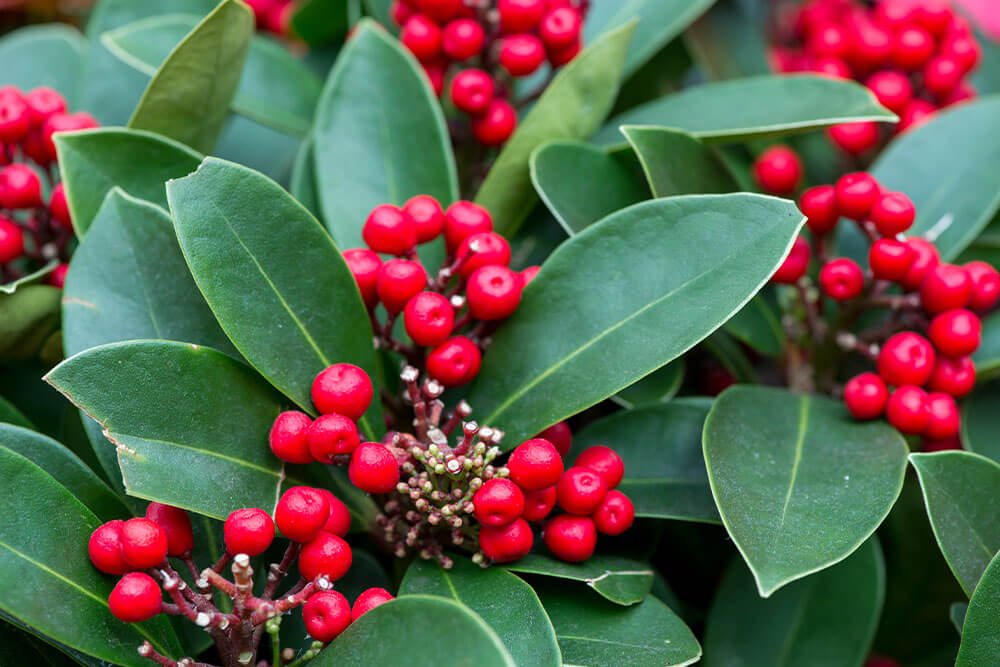
The dahoon holly is a unique holly option and one that you will not soon forget. Part of what makes this holly stand out is its growth habit. The dahoon holly plant grows with a visible main trunk, which is not commonly a feature of most holly plants. That visible trunk holds a rounded but slightly irregular canopy that gives this plant a clear tree form rather than growing like a rounded shrub. The dahoon holly also has beautiful leaves that are rounded and elongated. They form in loose clusters that surround equally attractive clusters of light red berries.
6. European Holly (Ilex aquifolium)
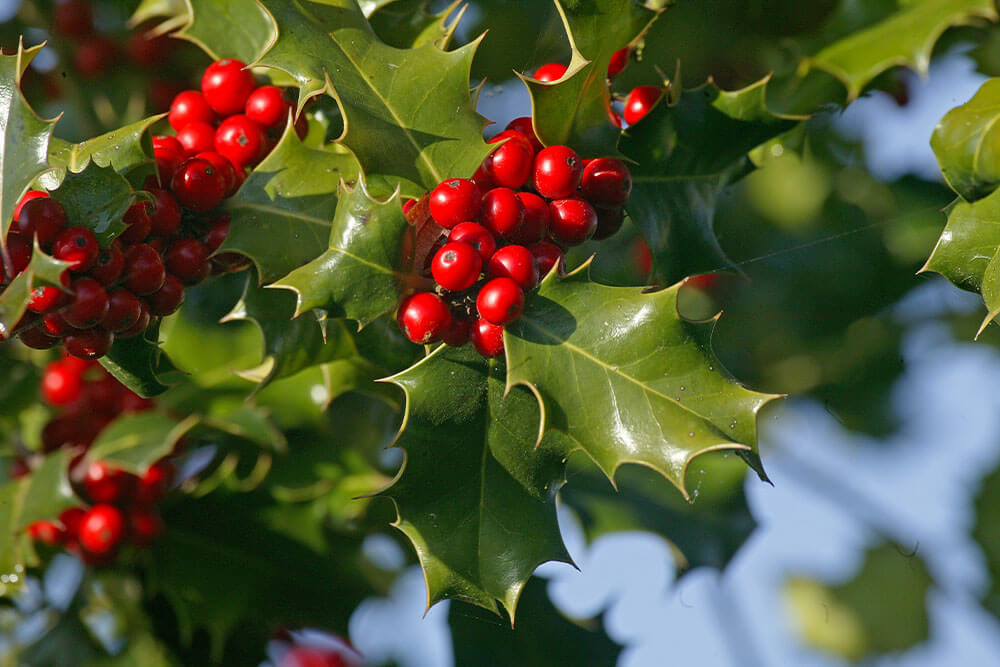
The European holly, which also goes by the name English holly or the botanical name Ilex aquifolium, is, in many ways, the European equivalent of the American holly. Both these shrubs share common characteristics when it comes to foliage and fruits. Mainly, both the European holly and the American holly have glossy leaves that have multiple sharp points on the margins. Additionally, both shrubs also have bright red berry clusters that give them winter appeal, while many other plants lack color and are in a dormant phase.
7. Hedgehog Holly (Ilex aquifolium ‘Ferox Argentea’)
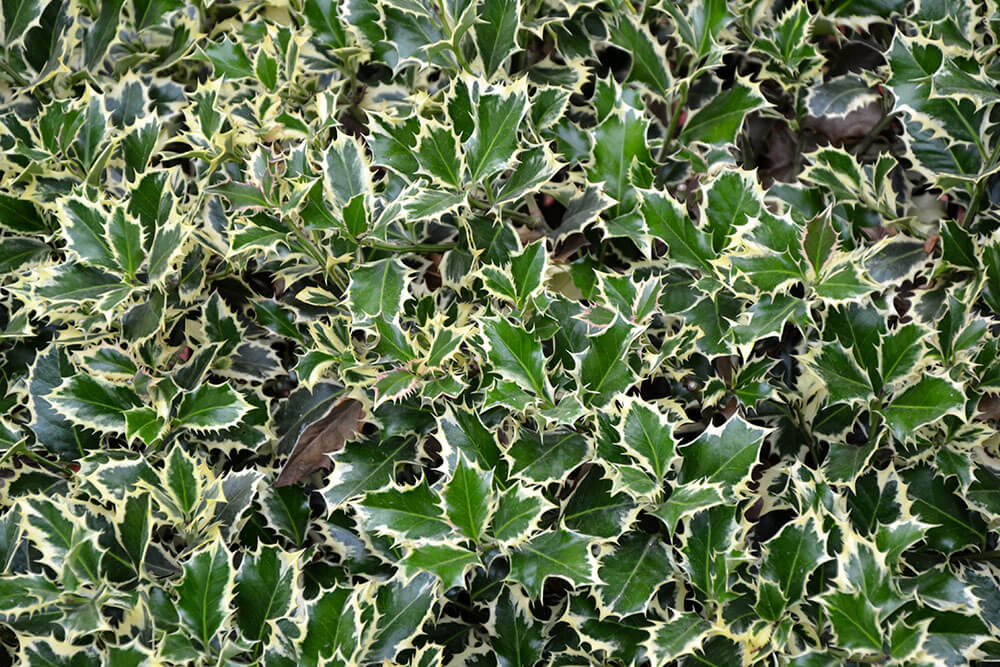
Like the blue holly that we mentioned earlier, the hedgehog holly is another one of the few entries on our list that is a cultivated variety rather than being a naturally occurring species. That cultivation has led the hedgehog holly to have some of the most amazing leaves in the entire holly family, which is saying a lot. Each leaf of the hedgehog holly is mainly green with bright yellow accents in the form of some surprisingly large spikes. That feature makes the hedgehog holly one of the few holly species that offers shades of yellow.
8. Inkberry (Ilex glabra)
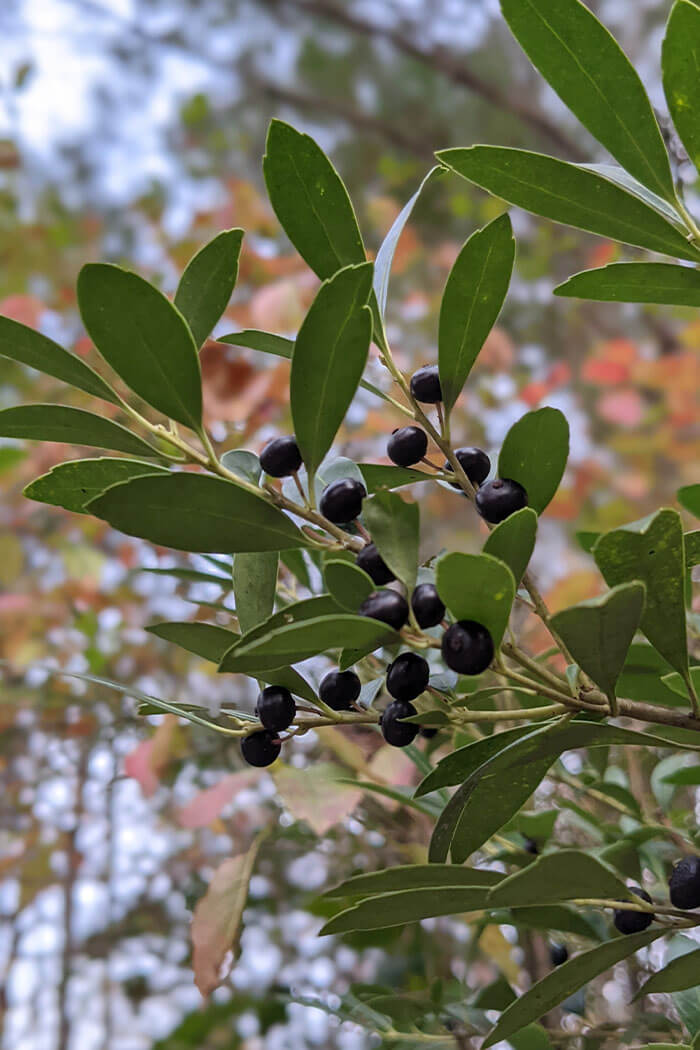
The inkberry shrub is a plant that does not always get the recognition it deserves, especially compared to other hollies. However, that lack of praise is something that we find to be entirely unjustified. The reason is that the inkberry is not only a very attractive shrub, but it is also a vibrant native species that is capable of supporting local wildlife. The inkberry gets its name from the dark black fruits that it produces. The leaves of this plant are small and rounded, and so are the overall size and growth habit.
9. Japanese Holly (Ilex crenata)

Along with the American holly and a few others, the Japanese holly is one of the most popular holly options. Japanese hollies come with a set of leaves that are small, curved, rounded, and incredibly glossy. In most cases, those leaves will respond well to pruning, which allows you to trim and shear your Japanese holly into different shapes. Most often, people will shear their Japanese hollies into neat spheres. Also, there are some forms of Japanese holly that have an astoundingly narrow and upright form.
10. Longstalk Holly (Ilex pedunculosa)
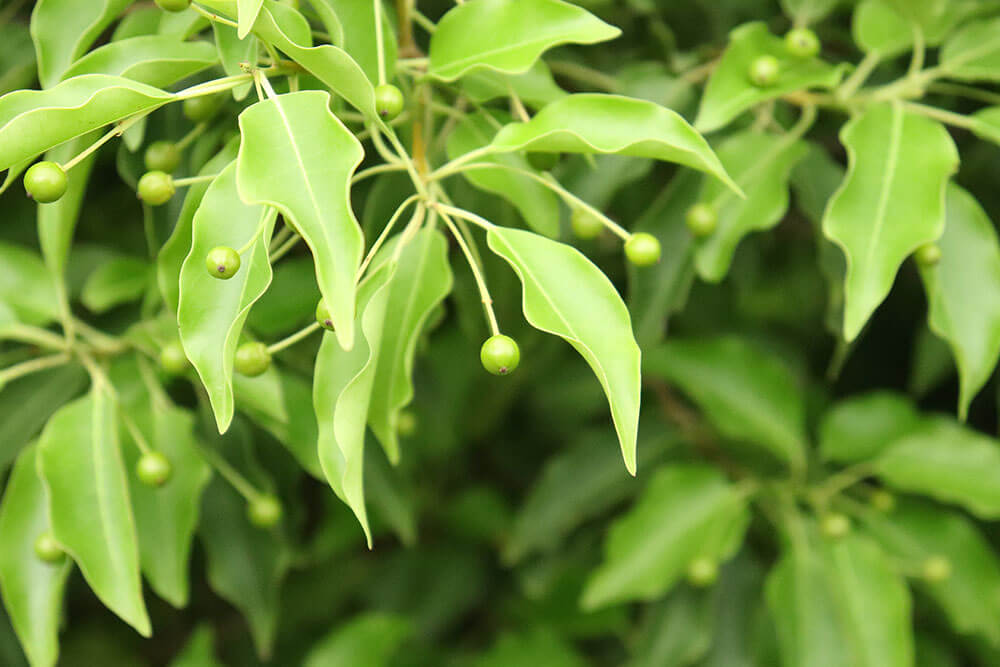
The longstalk holly has one of the most recognizable appearances among the other hollies on this list, partially due to the fact that you might not guess that this plant is holly at all. Rather than forming dense clusters, the fruits of the longstalk holly dangle individually from long stems. The longstalk holly also has pointed oblong leaves that don’t look like typical holly leaves at all. During the bloom time, the longstalk holly carries tiny light green flowers, which, while not remarkable visually, give off a lovely fragrance. This pleasant scent is just another example of how the longstalk holly manages to differentiate itself from the many other viable holy options on this list.
11. Winterberry (Ilex verticillata)
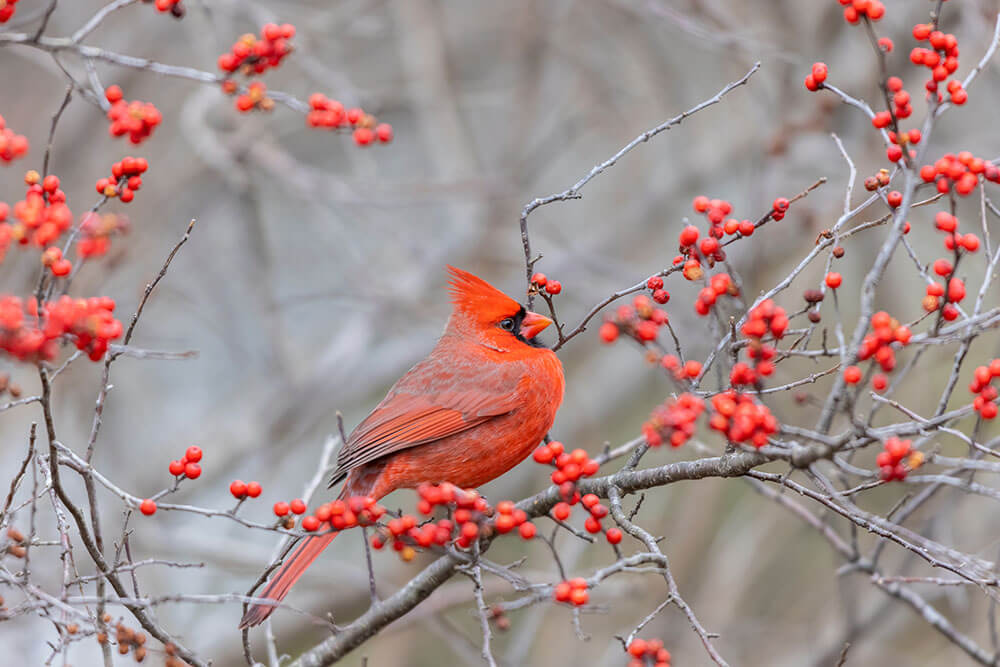
Many of the most popular holly shrubs are broad-leaved evergreen species that provide greenery all year long. However, the winterberry shrub breaks from that mold but remains vibrant during the winter despite that. Although the winterberry loses its leaves, it holds some of the brightest red berries you can imagine during the colder months. That feature gives this plant its name and the majority of its ornamental appeal. The winter fruits of the winter berry are also a great food source for birds, while few others are available. During the rest of the year, the winterberry shrub holds lush deciduous leaves that fill out this plant’s irregular but rounded habit.
12. Yaupon Holly (Ilex vomitoria)
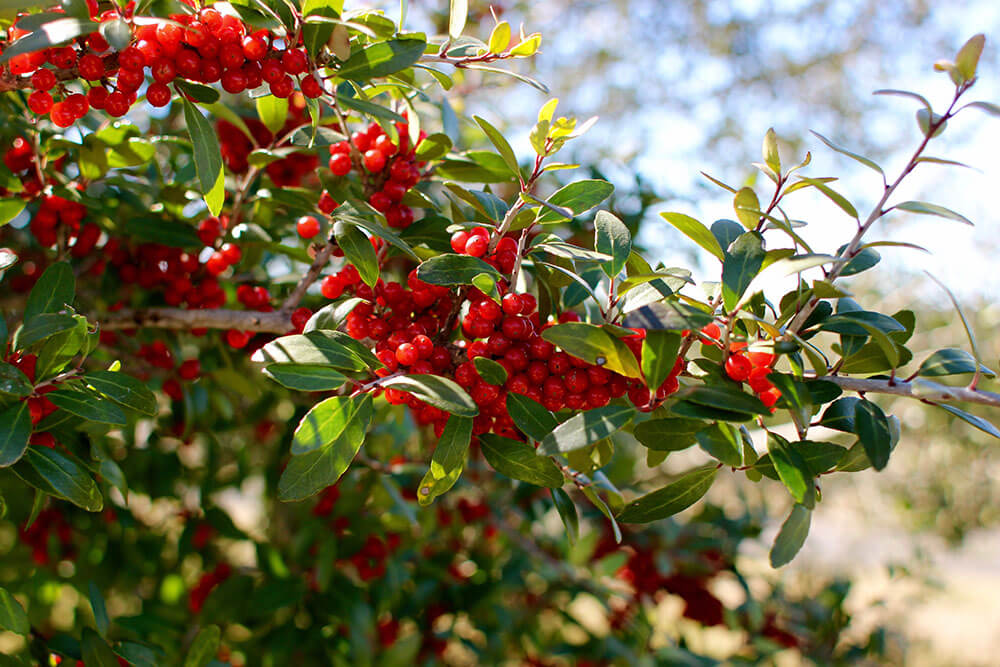
The final entry on our list is one of the most versatile hollies you can find. The yaupon holly can grow in a tree-like form, or it can grow as a tree with a somewhat loose canopy of vegetation. Additionally, you can find dwarf versions of this plant that are compact enough to fit in small growing spaces, making them incredibly convenient for those with minimally-sized gardens. Like most of the other hollies on this list, the yaupon holly develops sets of red fruits, which can be quite dense at times as they cluster close to the shrub’s bark.
Frequently Asked Questions About Holly Plants
What is the Best Holly Plant?
When determining the best plant within a certain category, the result will always be a matter of personal opinion. However, when it comes to types of hollies, there are a few that prove to be more popular than others. This does not mean that these more popular options are objectively better than others, but if you are new to hollies, these popular options are a great place to start. Some of the most well-liked holly species are the American holly, winterberry, Japanese holly, and European holly. Still, there are plenty of other hollies that are just as valuable in the landscape.
What is the Difference Between Japanese Holly and Holly?
The difference between a Japanese holly and a holly is that a Japanese holly is a holly, except that it is one specific type of holly. All holly plants come from the genus known as Ilex. The botanical name that follows the genus indicates the specific holly species or type. For example, the Japanese holly goes by the botanical name Ilex crenata. Visually, what makes the Japanese holly species different than other hollies is that the Japanese holly has small round leaves and dark black fruits. By contrast, many popular hollies have red fruits and leaves with more complicated shapes.
Is a Holly a Tree or a Bush?
Whether a holly is a tree or a bush depends on a few factors. For instance, there are some holly species that grow large enough that they seem to be on the cusp between large shrubs and small tree designations. Additionally, these larger hollies will look more shrub or tree-like depending on how you choose to prune and shape them. However, overall, most people do consider hollies to be a group of shrubs.
What is Holly Good For?
The holly plant is great for many uses, both in the garden and out of it. For example, holly plants are incredibly popular due to their glossy evergreen leaves and bright red winter fruits. These two features allow the branches of these plants to serve as great winter décor. Holly plants are also fantastic in the landscape. They are large enough to create wind screening and privacy. Additionally, hollies are incredibly attractive plants, mainly due to their leaf and fruit characteristics once again.
Is Holly Toxic to Humans?
Although the bright red fruits of a holly plant are incredibly alluring, you should not allow yourself, your children, or your pets to eat them. While many parts of the holly plant are not toxic, the fruits are. If someone ingests the fruits of a holly shrub, they will likely experience symptoms such as vomiting, diarrhea, drowsiness, and other adverse complications. Based on that risk, it is incredibly important to monitor any children, dogs, cats, or other animals that go near your holly plants while they are bearing fruit.
Although the first impression of many gardeners is that holly plants are all one and the same, nothing could be further from the truth. Our list exemplifies that point perfectly. However, there is still more unique knowledge to learn about these fantastic plants. That’s why we decided to answer a few of the most commonly asked questions about holly plants in the sections below.
12 Graceful Types of Holly Plants with Majestic Leaves and Fruits
You now know some of the most valuable types of holly plants that exist, as well as a few interesting facts about this elegant plant species. Of course, holly plants will always remain popular due to the amazing fruits and foliage that they are well-known for having. However, while reading this list, you likely came across a few holly species that were new to you and had traits that differed from your idea of a typical holly. Use that knowledge to your advantage next time you need a shrub or small tree in your yard. In such cases, one of the hollies on our list may be the perfect plant option.



